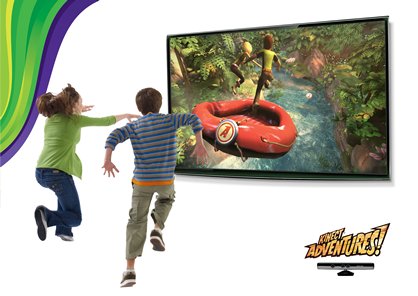Is Kinect shooting itself in its invisible foot?
Making something nobody asked for to appeal to a demographic that isn't listening - are you sure, Microsoft?
Then we have the most fatal flaw of Kinect - the fact it doesn't really appeal to anybody, and actively excludes a key demographic of the "casual" market.
We all know how the market is. Consumers reward those who came first, and came loudest. This is why Apple dominates the portable media player market. It's why we call online audio shows "podcasts" and not "zunecasts." It's because Apple got in there, dominated the market, captured public mindshare, and never let go. Nintendo has also done this with motion control. It cornered a market that it won't let go, despite the cloying "me too" shouts of Microsoft and Sony. Why would the casual user buy an Xbox 360 and Kinect when he already has those games on Wii?
Kinect is looking set to be priced around the $150 mark. A new Xbox 360 Slim costs $299. Let's just pretend that Kinect costs $99, as some have rumored. That's just under $400 for an Xbox 360 and Kinect, compared to a $199 Wii that consumers already understand and trust. Part of the Wii's success was arguably its consistently appealing price, not to mention Nintendo's understanding of its audience. The 360 with Kinect lacks both a low price and a publisher that understands what the gaming market truly wants.

Microsoft also forgets another important aspect of what made the Wii so appealing. It was the fact that anyone could play it. But surely anyone can play Kinect? No, and if you think that, you're underestimating a key part of Nintendo's demographic - old people.
Old people loved the Wii because it was easy to play and provided a little light exercise, but wasn't physically demanding. How is your eighty-year-old grandmother going to handle Kinect? Will she be body popping to Dance Central or pulling off 360 degree spins in Sonic Free Riders? Doubtful. Although I'd love to meet a gran that could do that.
Even for normal people, Kinect can only really deal with short and easy games. Standing up to play the vast majority of titles isn't something that gamers will find comfortable for long. It locks Kinect out of providing anything longer and deeper than the average throwaway party game. Then you have to factor in how absurd people look when playing with Kinect. Sure, it was a little silly with the Wii, but holding a controller at least makes you look like you're playing a game and not just having a seizure. The Wii could also be played sitting down with modest arm movements, reducing embarrassment. I wouldn't expect self conscious people to play with this peripheral at all.

This, of course, is all assuming the damn thing works in a typical living room, as opposed to stark demo rooms with plain white walls and soft, even lighting. Given how finicky the existing 360 camera and EyeToy are, I’m skeptical until proven wrong.
Ultimately, Microsoft is playing to an empty theater with Kinect. It's like a vacuum cleaner manufacturer trying to make cars, for no reason other than greed. Microsoft already has a loyal fanbase, but it just wasn't enough for the company. It had to try and take Nintendo's audience too, but it tried with an ill-conceived system that has short term appeal, very limited gameplay potential, and the inability to be enjoyed by a key casual demographic.

I believe Kinect is the Rob the Robot for a new generation. Sure, that sounds like a bold statement given how much hype there is behind Kinect, but there was hype for the Powerglove, and the Genesis Activator, too. They failed because they were limited in what they could do, they were difficult to use properly, and it was just better to use a real controller.
I give Kinect five years before you can buy it at a flea market for five bucks. If this is the future of gaming, then it'll be a very dismal future indeed.
Jun 28, 2010
Sign up to the GamesRadar+ Newsletter
Weekly digests, tales from the communities you love, and more


